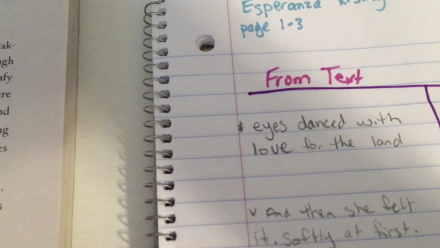Download a Graphic Organizer
The double-entry journal strategy encourages students to record their responses to text as they read. Students write down phrases, sentences, or vocabulary from their assigned reading and their reaction to it. The purpose of this strategy is to give students the opportunity to express their thoughts and become actively involved with what they are reading.
Why use double-entry journals?
Double-entry journaling or dialectical journaling has been shown to improve students’ comprehension, vocabulary, and retention of content. By allowing students to choose what they react to within a text, you are giving them choice and honoring their perspectives. It’s also an interactive way to activate prior knowledge with any form of written text, read alouds, or listenings that are assigned in class. Teachers and students love double-entry journals because they are inherently collaborative and foster a connection between reading and writing.
How to create and use them
Introduce a passage of text to the students. Discuss the double-entry journal technique and model the procedure including specific guidelines for writing. Have students read the selected text making journal entries whenever a natural pause in the reading occurs, so that the flow is not interrupted constantly.
- Students can simply fold a piece of paper in half, lengthwise or you can download and distribute our Double-Entry Journal (fillable pdf).
- In the left hand column, students write a word, phrase, or sentence from the selection that was particularly meaningful to them, along with the page number.
- In the right hand column, students react by writing a personal responses to the word, phrase, or sentence on the left. Students may also find it helpful to respond with a comment, question, connection made, or an analysis.
- Students can share their responses with partners, small groups or back with the whole class.
Let’s listen as a high school history teacher gives a two-minute overview of how he creates double-entry/dialectical journals and why he uses them with his students.
Strategy in action
Now, let’s take a look at a teacher’s use of a double-entry journal with the novel Esperanza Rising
Tips for success
- A simple way to scaffold the use of double-entry journals is to prefill some but not all of the left-hand side with important words, phrases, or sentences from the selection. As students learn what information they find most helpful to record on the left-hand side, you can gradually release the strategy to them by providing fewer prefilled boxes.
- Remember to leave time so your students can discuss their ideas with one another. A good rule of thumb is to leave 5-10 minutes for pairs or 10-15 minutes for small groups to share what they recorded and their reactions to it.
